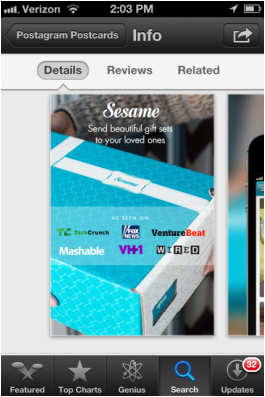|
I put this together for a friend but thought it was worth sharing. If you are scheduling, you need to:
This template provides a queuing model and a linear optimization tool to address #1 and #2. Then once you know how many folks you need on each shift, you can use the flexible schedule maker. Grab the template and be sure to watch the tutorial video.
2 Comments
I was cleaning out emails and found this email from May 2013. It was sent to my Team Leads at TalkTo. #TurningEmailsIntoBlogPosts. COACHING is not easy. Think about it: You have a goal (e.g. improved attendance) or a piece of knowledge (e.g. the best way to talk to a business) in your mind and your job is to explain that goal/knowledge to someone and then have them do it as well as you expect. Not easy! But coaching is a key part of all of our jobs.
So what's the best way to coach? Here's my thinking. Timing and setting matters. Some people are OK with "intervention" coaching, meaning right at the point of the problem. Others might be edgy or defensive at that moment and prefer "post mortem" coaching. Your job is to know what works best for each of your team members and try to adjust. If the situation doesn't allow you to act exactly as the team member wants, that's OK. Just be cognizant of the team member's preference. If, for example, you need to intervene on a person that prefers post mortem, lead with something like, "I apologize for intervening right now. But I'm hoping to quickly speak with you about XYX. Sound good?" Of course, the best is a routine coaching session that is scheduled and planned. I know you're doing this; please keep it up. This will be extremely important for new hires. Shoot for 1 session each week for the first month. After the first month, you'll have a better understanding of what is necessary. As always, test and learn. Also, setting matters. Some people prefer chat; it allows them to slowdown and think through their response. Other's have trouble picking up subtleties in chat and do better of the phone. Lead with something positive. We all appreciate being recognized for our good work. Whenever possible, lead with a positive accomplishment. For example, after two weeks of near perfect attendance one of your team members arrives 30 mins late. Given the history of this teammate, you want to coach in order to avoid sliding back into a negative trend. Lead with, "Thank you for your improved attendance over the last two weeks. It's made a noticeable difference in your work and its had an impact on the entire team. Let's keep this trend going, which is why I want to speak with you about yesterday's tardiness." Paint a big picture with Us and We; avoid I/You. The I/you structure is polarizing. It puts people on the defensive and it won't make for a constructive coaching session. Rather, elevate coaching to the greater group. Let's again use the team member who is late. "You were late yesterday. I want to you improve your attendance" is confrontational. Rather, elevate the issue to the greater group. "Being on time is extremely important. Arriving on-time positively impacts every aspect of our business. Our users benefit from faster service. Our team members aren't stretched thin and are able to take an adequate amount of breaks. This is why it is so important for all us to be on time." Note that I focused on the positive ("being on time") and not the negative ("being late"). Leave the coaching session with an action plan/goal If you layout a plan or set a goal, you'll have a meaningful point of reference for the next coaching session. So leave a meeting with an explicit goal or plan and then review the progress of that plan or goal in the next meeting. When I think about continuous improvement, I think about this small plaque at the EAA AirVenture Museum in OshKosh, WI.
In 1903, the Wright Brothers made the history books with the first "controlled, powered and sustained heavier-than-air human flight." Everyone celebrates the first flight, which was 40 yards in about 12 seconds. The most interesting aspect of the day is how much the Brothers improved. By the end of the day, they stayed in the air 59 seconds (391% improvement) and traveled 852 feet (610% improvement). In terms of speed, the first flight was 10 ft/second; the final flight of the day was 14 ft/second (40% improvement). For the last few months, I have worked alongside my partner Jimmy Byrum and together we created some very successful Facebook mobile ads for TalkTo (iTunes, Google Play). Inc Magazine was interested in our insights. Check out this blog that appeared on Inc.com: CLICK HERE TO READ FULL POST.
Lately, the TalkTo team has been talking about tag-lines and messaging. I always find it helpful to see a list of examples. So I created the below list of popular consumer Internet (mostly mobile) tag-lines. If I've got one wrong, please let me know. If you want to add anything, please leave a comment. And sorry...it's a working list so nothing is alphabetized or categorized.
Also, here is a list of mature company tag-lines. TalkTo - No more calls! Search for any business, text it and get a response. Uber - Everyone's private driver. Lyft - Your friend with a car. SnapChat - Realtime picture chatting for iOS and Android. Instagram - Fast beautiful photo sharing. Postagram - Send your photos as real postcards. Sincerely - Making the world more thoughtful. Exec - Housecleaning and on-demand errand services. TaskRabbit - Task & Errand Service By Awesome, Trustworthy People Waze - Get the best route, every day, with real-time help from other drivers. foursquare - Discover and share great places with friends. This past Wednesday, VentureFizz hosted an event about scaling to 1million users. It was moderated by Antonio Rodriguez of Matrix Partners, the shop that backed TalkTo. The panelists were Brian Carr from Springpad, Sarah Welch from Gazelle, Scott Healy of Care.com, and Ed Marci of Wayfair. A ton of knowledge was dropped. Here are the 7 major takeaways. 1. App Store - Don't just use screen shots of your app. Brian Carr from Springpad suggested using the first 1 - if not 2 - screens to tell your story through pictures. This alone gave Springpad a meaningful bump in downloads. Takeaway: Use the first screen as more of an advertisement than a tour/tutorial of the app. Here is a good example from Sesame by Sincerely: 2. Google Play - You won't get any love in Google Play if your marketing materials have Apple/iPhone. So if you're serious about marketing in the Android market, create Android centric images and video.
3. App Store v. Google Play: - Apple rank is a function of # of downloads and frequency of downloads. Google Play, on the other hand, is a function of Reviews and Uninstalls. Counting uninstalls is brilliant; it's the true sign of a useless app. 4. Facebook wins! - Antonio asked: "If you had one marketing platform to invest all of your kids' college fund into, which one would it be?" Facebook got 3/4 votes. There was a lone vote for content marketing. 5. Fun Fact 1 - Average person has 43 apps on their phone and use just 8 per day. 6. Fun Fact 2 - 7 pm is the heaviest hour for mobile traffic. 50+ million American launch their phone during this hour every day. 7. Localize - Even if your app doesn't work outside of the United States, you should still localize it. I didn't get the exact reason but I believe it is because Apple looks more favorably at localized apps. Can anyone shed some more light on this? For the last five or so years, everyone has been asking: "What will web 3.0 be"? No one saw this coming but it's here. Web 3.0 is the "Ephemeral Era" and the leading player is Snapchat. Yes, that dumb app that enabled sexting marks a monumental change in the way we interact on the web.
In all previous eras, the internet was your permanent record. So people did one of two things. They either ignored the permanency and posted incriminating content that alienated friends and sent employers and insurers running for the hills. This week's poster child is Sorority Psycho Rebecca Martinson. Or, people understood the permanent nature of the web and therefore created a white-washed version of their digital life. I mean, is your Facebook page a true representation of your life? Mine sure isn't; notice there are no photos of my bald spot. Snapchat changed this. Snapchat is a perfect mechanism for ephemeral and real expressions of oneself. Take a silly photo, write a stupid caption and don't worry because it will be erased in seconds. People now have a safe space to express themselves freely over the web without harming their permanent record. I'm convinced we are at the dawn of the Ephemeral Era because the scion of a previous era is in denial. On The Colbert Report, Eric Schmidt of Google concluded his interview with this phrase: "There is no delete button." Eric hopes not because his company's bread and butter is indexing all of the worlds content. But people want a delete button and Snapchat has given them that. It was the final class of “Mobile and Web Development.” Twelve teams were presenting their final projects. We were one of them. I was ready to BS my way through a presentation of crudely crafted wireframes, collect my B for the semester, and inch 3 credits closer to graduation.
When I got to class, it all changed. Zak, my partner, took my iPhone 3G, plugged it into his Mac and handed it back to me. “Create an account,” he said. “What?” I said dumbfounded. “Open the app and create an account.” I clicked on a blank icon, entered my email address and was brought to a white screen. In the top right corner of the app, was a “+”. I hit it, which brought me to a new screen asking me to create an album. With my heart beating steadily faster, I typed in “test” and hit “Done.” I was brought to another screen with a camera icon. I took a photo. It uploaded. I then noticed an “invite” button. I hit it and entered Zak’s email into the pop-up box. One minute later a new photo, not taken by me, appeared next to the first photo I took. Viola! A collaborative album. Ditching the PowerPoint deck, we did a live demo for the class. When we were through, I asked: “How many of you would use this app?” About 42 out of 45 raised their hands. We were onto something. At that moment, we had an MVP: a barebones product built quickly that is used to test consumer reaction. Given the positive feedback, the next step was to build an initial product for the market – you know, something thoughtfully designed and rigorously tested. But did we do that? Nope. I was so hopped-up on the lean start-up buzz, that I spent the next six weeks saying “we need to build a Minimal Viable Product.” So we took the barebones design and added to it. Some of the features were sensible; for example, attaching the name of the photo-taker to the photo. Others were unnecessary; posting a photo to Twitter, for example, could wait. In the end, we spent 6 weeks adding features to a “minimal” product that had already tested positively with consumers. That time should have been spent enhancing our design, nailing the user experience, formulating the out-of-the-box experience and testing. Repeat after me: I will stop building an MVP after validating my product with real users and move quickly to building a market-ready product. Last week, Spottah 2.0 was released. The redesign was made possible by the talented Chris Allen. He discovered Spottah at a bachelor party, loved it, and pitched us on a redesign. Two days later, he shipped a reimagined home page. It was stunning. Chris crafted crisp designs and Yin brought them to life. And for the next few months, I had the honor of watching the Lennon/McCartney of app builders compose their masterpiece. I love business history. And I love music. So this is just about my favorite song. It's by Mark Knopfler, and it's the history of Ray Kroc and the founding of McDonalds. I've pasted the lyrics below. Enjoy!
i’m going to san bernardino ring-a-ding-ding milkshake mixers that’s my thing, now these guys bought a heap of my stuff and i gotta see a good thing sure enough, now or my name’s not kroc that’s kroc with a ‘k’ |
JONATHAN STEIMAN
I'm the Founder and CEO of Peak Support. This blog is my take on early-stage companies and innovation. Every so often, there may be a post about culture, networking, family -- you name it. After all, what is a blog if it isn't a tad bit unstructured.
Archives
December 2016
Categories
All
|



